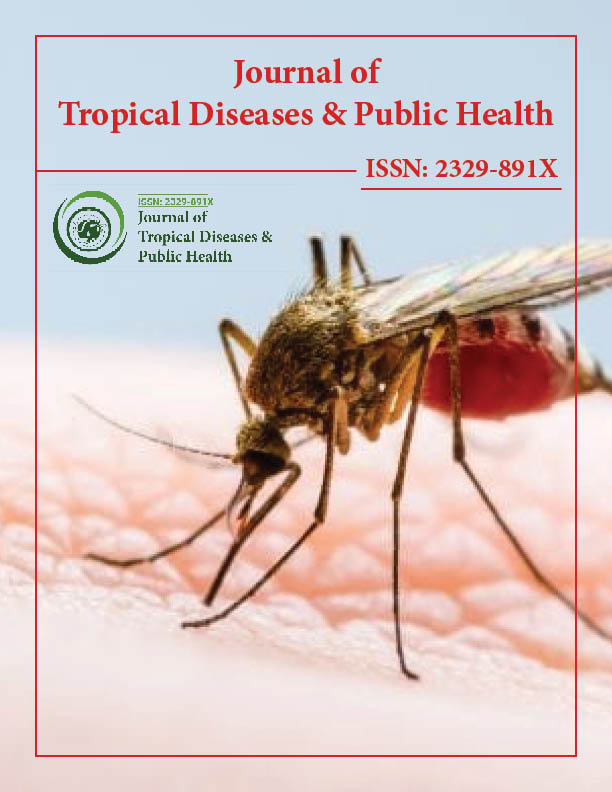Indexed In
- Open J Gate
- Academic Keys
- ResearchBible
- China National Knowledge Infrastructure (CNKI)
- Centre for Agriculture and Biosciences International (CABI)
- RefSeek
- Hamdard University
- EBSCO A-Z
- OCLC- WorldCat
- CABI full text
- Publons
- Geneva Foundation for Medical Education and Research
- Google Scholar
Useful Links
Share This Page
Journal Flyer

Open Access Journals
- Agri and Aquaculture
- Biochemistry
- Bioinformatics & Systems Biology
- Business & Management
- Chemistry
- Clinical Sciences
- Engineering
- Food & Nutrition
- General Science
- Genetics & Molecular Biology
- Immunology & Microbiology
- Medical Sciences
- Neuroscience & Psychology
- Nursing & Health Care
- Pharmaceutical Sciences
Opinion Article - (2025) Volume 14, Issue 2
Dengue Surveillance Limitations in Peri-Urban Growth Zones of Tropical Megacities
Liyana Perera*Received: 26-May-2025, Manuscript No. JTD-25-29791; Editor assigned: 28-May-2025, Pre QC No. JTD-25-29791 (PQ); Reviewed: 11-Jun-2025, QC No. JTD-25-29791; Revised: 18-Jun-2025, Manuscript No. JTD-25-29791 (R); Published: 25-Jun-2025, DOI: 10.35241/2329-891X.25.13.474
Description
The expansion of tropical megacities has resulted in new patterns of dengue transmission, particularly in peri-urban zones where urban infrastructure intersects with underdeveloped environments. These transitional areas often receive minimal attention in national surveillance programs, despite showing repeated spikes in dengue incidence. The difficulty in identifying and responding to cases in such settings stems from both institutional and environmental limitations, which together allow transmission to continue unchecked.
Peri urban areas develop rapidly and often without formal planning. As rural populations migrate toward city outskirts in search of employment or housing, they form settlements that lack stable water access, consistent waste management, and proper drainage systems. Containers used to store water, uncollected garbage, and discarded plastic items become breeding grounds for Aedes aegypti and Aedes albopictus mosquitoes, the primary vectors of dengue. The proximity of people and vectors in these settings increases the likelihood of sustained transmission, particularly during and after monsoon seasons.
Dengue surveillance systems in most tropical countries focus on formal health facilities located within city centers. These systems depend heavily on passive reporting, where cases are recorded only if patients seek medical care. In peri-urban areas, access to healthcare facilities may be limited or inconsistent. Travel distance, cost, and overcrowding at clinics deter residents from seeking early treatment. As a result, many infections remain undocumented, and clusters of dengue are missed during critical early stages. This underreporting masks the true scale of the disease and weakens public health responses.
The diagnostic capacity in peripheral areas also lags behind. Even when patients present with symptoms, healthcare providers may lack the tools needed for confirmation. Rapid diagnostic kits are not always available, and blood samples may need to be transported to central laboratories, delaying confirmation and response. In the absence of reliable testing, febrile illnesses may be misclassified as other common infections, including influenza or typhoid. Without accurate diagnosis, patients do not receive appropriate care, and data collection remains incomplete.
Community awareness about dengue symptoms and transmission is often low in peri-urban regions, especially among recent migrants who have limited exposure to health education campaigns. In many cases, early symptoms such as fever, headache, and joint pain are treated with home remedies or over-the-counter medications. Only when symptoms worsen such as severe vomiting, bleeding, or extreme fatigue do patients seek professional care, at which point complications may have already developed. This delay in care increases the chance of hospitalization and fatal outcomes.
Vector control measures in expanding peri-urban zones face unique difficulties. Public health teams struggle to keep pace with rapid construction, informal housing developments, and the frequent movement of residents. Fogging and larvicide application may be scheduled based on outdated maps that no longer reflect the current layout of the settlement. Additionally, vector breeding often occurs on private property or within informal waste dumps, which are difficult for public authorities to access or regulate. These operational constraints limit the effectiveness of routine interventions.
Conclusion
Improving surveillance in peri-urban zones requires both institutional adaptation and community engagement. Local health centers need to be equipped with basic diagnostic tools and trained staff capable of recognizing dengue symptoms early. Reporting systems should be simplified to allow frontline workers to submit case data rapidly, without excessive bureaucratic steps. Mobile teams may be deployed seasonally to conduct case finding, larval surveys, and educational outreach in high-risk zones, particularly those undergoing rapid expansion.
Citation: Perera L (2025). Dengue Surveillance Limitations in Peri-Urban Growth Zones of Tropical Megacities. J Trop Dis. 13:474.
Copyright: © 2025 Perera L. This is an open-access article distributed under the terms of the Creative Commons Attribution License, which permits unrestricted use, distribution and reproduction in any medium, provided the original author and source are credited.

